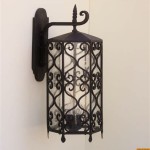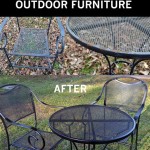Mastering Outdoor Lighting for Stunning Senior Portraits
Senior portraits represent a significant milestone, capturing a young adult poised on the brink of new adventures. The artistic merit of these portraits hinges heavily on the quality of light employed. Outdoor lighting, in particular, presents both opportunities and challenges. Understanding how to manipulate and leverage natural light, supplemented by artificial sources when necessary, is crucial for creating memorable and visually appealing senior portraits.
Effective outdoor lighting in senior portraiture involves a multifaceted approach. It requires careful consideration of time of day, weather conditions, location specifics, and the subject's individual features. The goal is to sculpt the light, highlighting strengths, minimizing imperfections, and creating an overall aesthetic that complements the senior's personality and style. This article will delve into key aspects of outdoor lighting for senior portraits, providing practical insights and techniques for achieving professional-quality results.
Understanding Natural Light: The Foundation of Outdoor Portraiture
Natural light is the primary resource for outdoor portrait photography. Its quality, intensity, and direction vary considerably depending on the time of day and weather conditions. Recognizing and adapting to these changes is paramount to success.
The "golden hour," occurring shortly after sunrise and shortly before sunset, is often considered the ideal time for outdoor portraits. During this period, the sun is low on the horizon, casting a warm, soft light that is flattering to skin tones. The angle of the light creates longer shadows, adding depth and dimension to the images. Careful planning to shoot during golden hour often yields the most desirable results.
Midday sun, in contrast, presents a significant challenge. The high angle of the sun produces harsh shadows under the eyes, nose, and chin, which can be unflattering. To mitigate this, photographers can seek out shaded areas, utilize diffusers, or employ fill flash to balance the light. Open shade, such as that found under a large tree or on the shaded side of a building, can provide a more even and diffused light, though it often requires adjustments to white balance to compensate for the cooler tones.
Overcast days offer a unique opportunity for even, soft lighting. The clouds act as a giant diffuser, scattering the sunlight and eliminating harsh shadows. While this can create a flattering look, it may also result in a lack of dimension and contrast. Photographers can compensate for this by choosing backgrounds that offer visual interest and texture, and by paying close attention to posing and composition.
The direction of light is also crucial. Front lighting, where the light source is directly in front of the subject, can be flat and uninteresting. Side lighting, where the light source is to the side of the subject, creates more dramatic shadows and highlights. Backlighting, where the light source is behind the subject, can create a beautiful rim light effect, separating the subject from the background. However, backlighting requires careful exposure to avoid silhouetting the subject.
Utilizing Reflectors and Diffusers: Mastering Light Modification
While natural light is the foundation, photographers often need to modify and control it to achieve the desired effect. Reflectors and diffusers are essential tools for this purpose. These tools allow photographers to manipulate the light, redirecting and softening it to create more flattering and visually appealing portraits.
Reflectors are used to bounce light back onto the subject, filling in shadows and adding brightness to the face. They come in various sizes and colors, each with its own unique effect. White reflectors provide a soft, neutral fill light. Silver reflectors provide a brighter, more specular fill light. Gold reflectors add warmth to the skin tones, mimicking the effects of golden hour. Choosing the appropriate reflector depends on the ambient light and the desired aesthetic.
When using a reflector, the photographer or an assistant typically holds it at an angle that directs the light onto the subject's face. The distance and angle of the reflector can be adjusted to control the intensity and direction of the fill light. It is important to avoid positioning the reflector in a way that causes glare or creates unnatural highlights.
Diffusers are used to soften and spread the light, reducing harsh shadows and creating a more even illumination. They are typically made of translucent material and are placed between the light source and the subject. Diffusers are particularly useful when shooting in bright sunlight, as they can soften the harsh light and create a more flattering look.
Diffusers come in various sizes and shapes, from small handheld panels to large scrims that can cover an entire area. The size of the diffuser will determine the amount of light that is softened. A larger diffuser will create a softer, more even light than a smaller diffuser.
When using a diffuser, it is important to position it correctly to achieve the desired effect. The diffuser should be placed close enough to the subject to effectively soften the light, but not so close that it blocks too much light. The angle of the diffuser can also be adjusted to control the direction of the light.
Incorporating Artificial Light: Balancing and Enhancing Natural Light
While natural light is often preferred for outdoor portraits, incorporating artificial light can be necessary to balance exposure, fill in shadows, or create specific effects. Speedlights and strobes are the most common types of artificial light used in outdoor portraiture.
Speedlights are small, portable flashes that can be mounted on the camera's hot shoe or triggered remotely. They are relatively inexpensive and easy to use, making them a popular choice for photographers of all skill levels. Speedlights can be used to fill in shadows, add a pop of light to the eyes, or freeze motion.
When using a speedlight outdoors, it is important to balance the flash output with the ambient light. This can be achieved by adjusting the flash power, aperture, and ISO settings. TTL (Through-The-Lens) metering can be helpful in achieving a balanced exposure, but manual adjustments may be necessary in challenging lighting situations.
Strobes are larger, more powerful flashes that are typically used in studio settings. However, they can also be used outdoors with the aid of portable power packs. Strobes provide more power and control than speedlights, making them suitable for larger groups or for overpowering the sun.
When using strobes outdoors, it is important to use light modifiers, such as umbrellas or softboxes, to soften the light and create a more flattering look. Light modifiers also help to control the spill of light, preventing it from affecting the background or other elements in the scene.
Regardless of the type of artificial light used, it is important to pay attention to the color temperature of the light. The color temperature of the flash should match the color temperature of the ambient light to avoid color casts. Gels can be used to adjust the color temperature of the flash.
Creative use of artificial light can enhance the overall aesthetic of senior portraits. For example, rim lighting can be created by placing a flash behind the subject, separating them from the background. Gels can be used to add color to the light, creating dramatic and artistic effects. Experimentation is key to discovering new and innovative ways to use artificial light in outdoor portraiture.
Ultimately, mastering outdoor lighting for senior portraits involves a combination of technical knowledge, artistic vision, and practical experience. By understanding the characteristics of natural light, utilizing reflectors and diffusers effectively, and incorporating artificial light when necessary, photographers can create stunning and memorable portraits that capture the unique personality and style of each senior.

Amber Lights Photography Stunning Outdoor Senior Portraits Of M Anna

Outdoor Senior Portrait Settings Lens Choice Lighting

Pin On Senior Photos

How To Mix Ambient Light And Fill Flash For Outdoor Portraits

Holy Family Outdoor Senior Portraits In Natural Light Kiefel Photography Boulder Co

Outdoor Senior Portrait Archives Gilmore Studios Orange County Ca Gilbert Az Newborn Cake Smash Family And Wedding Photographer

Outdoor Senior Pictures With Beauty Dish And Ambient Light Www Chromaticsstudio Com Picture

How To Use Off Light For Outdoor Senior Pictures

Senior Portraits How To Take Great Photos

11 Outdoor Portrait Photography Tips For Easy Shots
Related Posts







